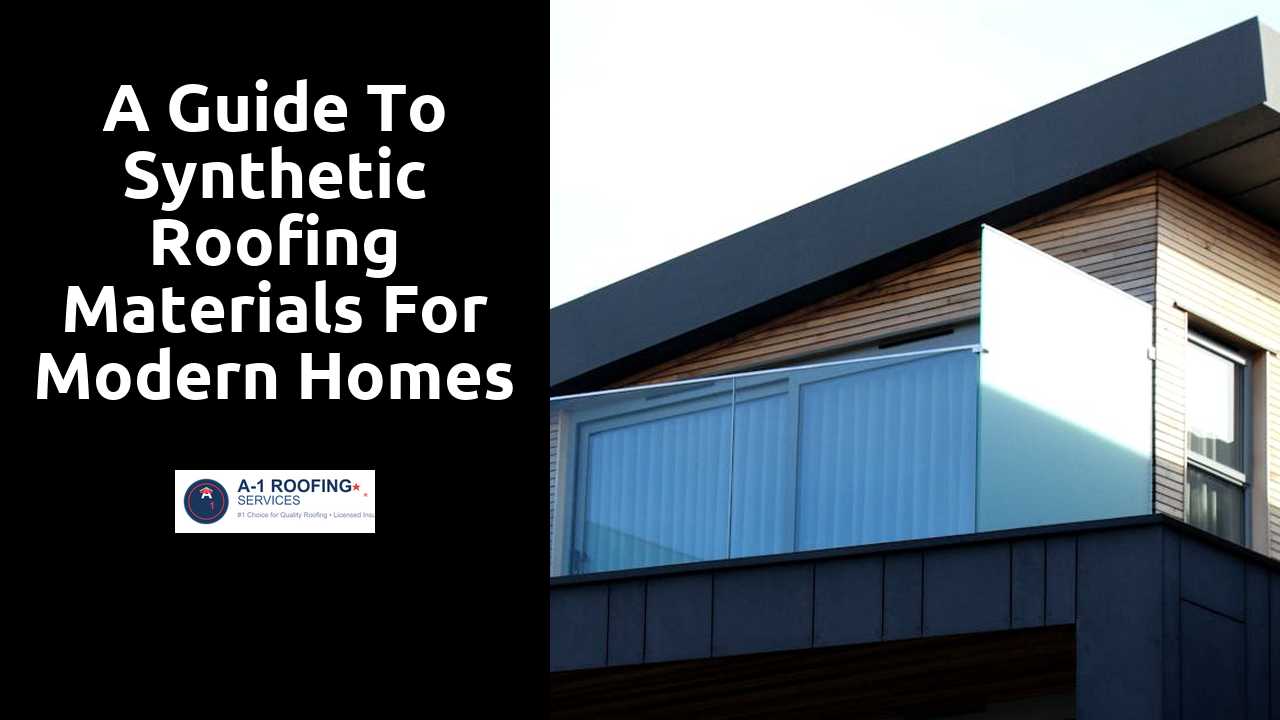
A Guide to Synthetic Roofing Materials for Modern Homes
Table Of Contents
Maintenance Requirements for Synthetic Roofing
Synthetic roofing materials are known for their low maintenance needs compared to traditional options. Regular inspections are recommended to identify any potential issues before they escalate. Cleaning debris from the roof surface is crucial to prevent mold or moss growth. Additionally, it's advisable to check and clear gutters and downspouts to ensure proper water drainage.
While synthetic roofs tend to be more resistant to damage, occasional repairs may still be necessary. Homeowners should monitor for any signs of wear or loose panels. Seasonally assessing the roof can help maintain its integrity and appearance. Adhering to manufacturer guidelines for maintenance can significantly extend the lifespan of synthetic roofing materials.
Continue to read this blog post for more great tips.
Tips for Ensuring Longevity and Performance
Regular inspections are essential to maintain synthetic roofing materials effectively. Check for damage, debris build-up, and areas where water might be pooling. Cleaning gutters and downspouts ensures optimal drainage, preventing water-related issues that can compromise the roofing system over time. Keeping an eye on seams and flashing is also crucial, as these are common areas prone to wear.
Proper ventilation plays a critical role in the longevity of synthetic roofing. Adequate airflow helps to reduce heat build-up, which can exacerbate wear and tear. Implementing a proper insulation strategy in the attic can complement ventilation efforts, thus enhancing energy efficiency. Lastly, always seek professional assistance for repairs or maintenance needs to achieve the best results and preserve warranty conditions.
Aesthetic Choices in Synthetic Roofing
Synthetic roofing materials are available in a wide array of colors and styles, providing homeowners with numerous options to match their personal taste and architectural design. Manufacturers often mimic traditional roofing materials like slate, wood, and tile while offering an improved look that comes with modern durability. This versatility makes it easy for homeowners to find a synthetic roofing option that complements the aesthetic of their residence, whether aiming for a classic, rustic, or contemporary appearance.
Beyond traditional looks, synthetic roofing also supports creativity in design. Many products allow for unique color combinations, patterns, and textures that can enhance the overall visual appeal of a home. With advancements in technology, these materials can achieve an authentic appearance, satisfying both aesthetic desires and practical considerations. This blend of functionality and style ensures synthetic roofing not only protects but also elevates the overall charm of the property.
Color and Style Options Available
Synthetic roofing materials offer a wide array of colors and styles that can complement the design of any modern home. Homeowners can choose from vibrant hues or subtle earth tones, allowing for personalization that enhances curb appeal. Many synthetic options mimic the look of traditional materials like cedar shakes or slate, providing the elegance of natural products without the associated maintenance.
The versatility of synthetic roofing extends to various profiles and textures. From sleek and modern to rustic and charming, these materials can fit into diverse architectural styles. Customization options available from manufacturers often include finishes that replicate the appearance of aged materials, providing a timeless look that appeals to many homeowners while ensuring longevity and performance in practical applications.
Durability and Weather Resistance
Synthetic roofing materials have become increasingly popular due to their impressive resilience against harsh weather conditions. Many products are designed to withstand extreme heat, heavy rain, and even hail damage. Their composition often includes advanced technologies that enhance thermal performance and reduce the likelihood of weather-related wear. This durability factor is a significant advantage for homeowners seeking a long-term solution that minimizes the need for frequent repairs or replacements.
Rain, snow, and wind can take a toll on traditional roofing materials, but synthetic options are formulated to resist these elements effectively. UV protection is a feature of many synthetic roofs, helping to prevent fading and degradation from sun exposure. In addition, the lightweight nature of synthetic materials means they place less stress on the underlying structure, making them a viable choice for those looking for reliable and efficient roofing solutions.
Performance in Extreme Conditions
Synthetic roofing materials are engineered to withstand a range of environmental challenges. Many options are designed to be fire resistant, which adds an extra layer of safety for homeowners. These materials also offer impressive resistance to impact, making them less susceptible to damage from hail or falling debris. Furthermore, their ability to retain structural integrity during high winds ensures reliability in severe weather conditions.
When it comes to temperature fluctuations, synthetic roofing demonstrates excellent performance. Materials such as synthetic slate and tiles can handle extreme heat without warping or cracking. Additionally, their low thermal conductivity helps in maintaining stable indoor temperatures, which enhances energy efficiency. Rigorous testing has shown that these roofing options can endure heavy snow loads just as effectively, providing homeowners with peace of mind regardless of the climate they face.
Related Links
Comparing Roofing Underlayment Options for Residential RoofsExploring the Benefits of Wood Shake Roofing